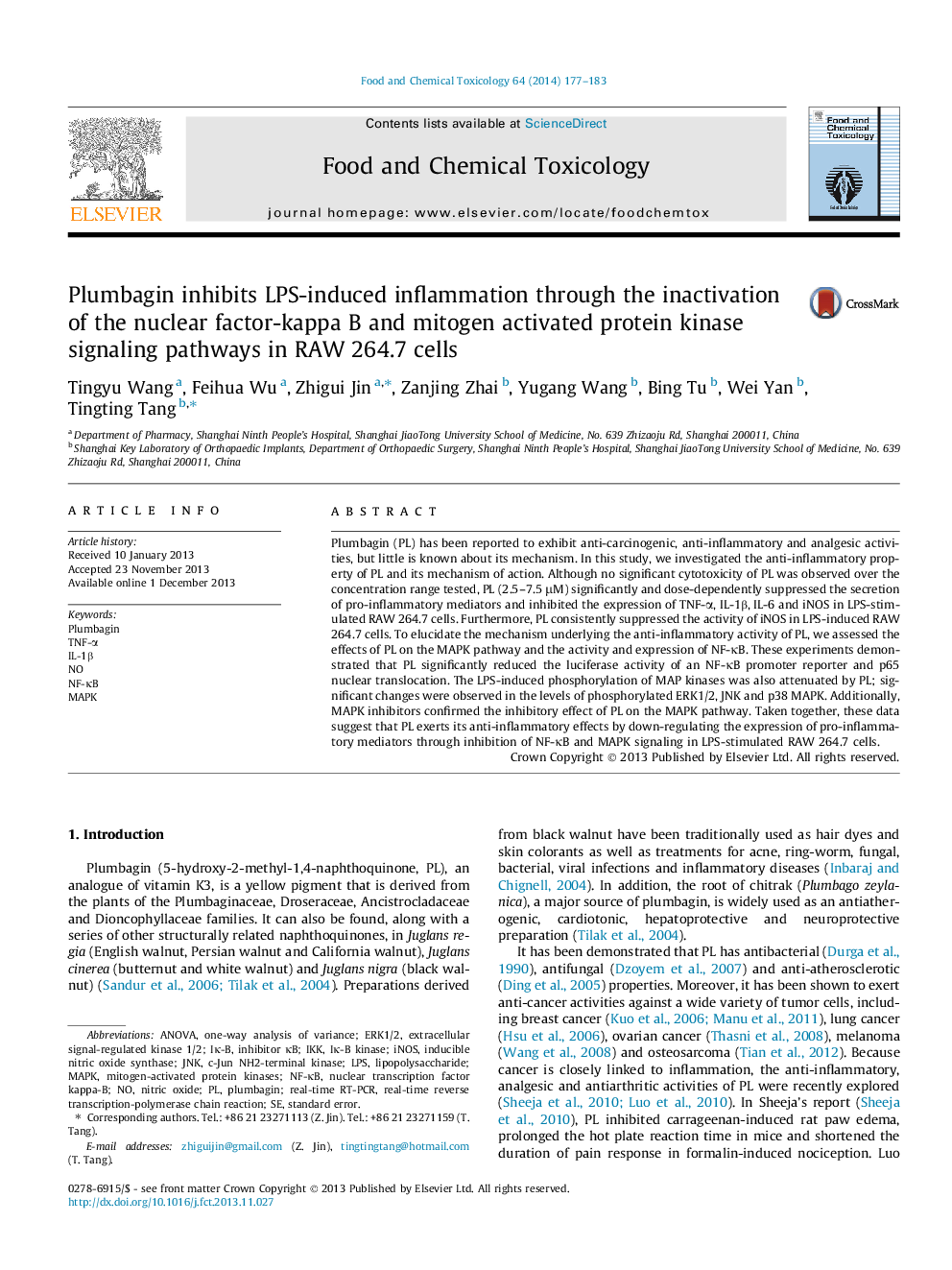| Article ID | Journal | Published Year | Pages | File Type |
|---|---|---|---|---|
| 5850887 | Food and Chemical Toxicology | 2014 | 7 Pages |
â¢PL does not influence the viability of RAW 264.7 cells at the tested concentrations up to 7.5 μM.â¢PL significantly and dose-dependently suppresses the expression and secretion of pro-inflammatory mediators.â¢Anti-inflammatory property of PL is associated with inhibition of NF-κB and MAPK signaling in LPS-stimulated RAW 264.7 cells.
Plumbagin (PL) has been reported to exhibit anti-carcinogenic, anti-inflammatory and analgesic activities, but little is known about its mechanism. In this study, we investigated the anti-inflammatory property of PL and its mechanism of action. Although no significant cytotoxicity of PL was observed over the concentration range tested, PL (2.5-7.5 μM) significantly and dose-dependently suppressed the secretion of pro-inflammatory mediators and inhibited the expression of TNF-α, IL-1β, IL-6 and iNOS in LPS-stimulated RAW 264.7 cells. Furthermore, PL consistently suppressed the activity of iNOS in LPS-induced RAW 264.7 cells. To elucidate the mechanism underlying the anti-inflammatory activity of PL, we assessed the effects of PL on the MAPK pathway and the activity and expression of NF-κB. These experiments demonstrated that PL significantly reduced the luciferase activity of an NF-κB promoter reporter and p65 nuclear translocation. The LPS-induced phosphorylation of MAP kinases was also attenuated by PL; significant changes were observed in the levels of phosphorylated ERK1/2, JNK and p38 MAPK. Additionally, MAPK inhibitors confirmed the inhibitory effect of PL on the MAPK pathway. Taken together, these data suggest that PL exerts its anti-inflammatory effects by down-regulating the expression of pro-inflammatory mediators through inhibition of NF-κB and MAPK signaling in LPS-stimulated RAW 264.7 cells.
Graphical abstractDownload full-size image
